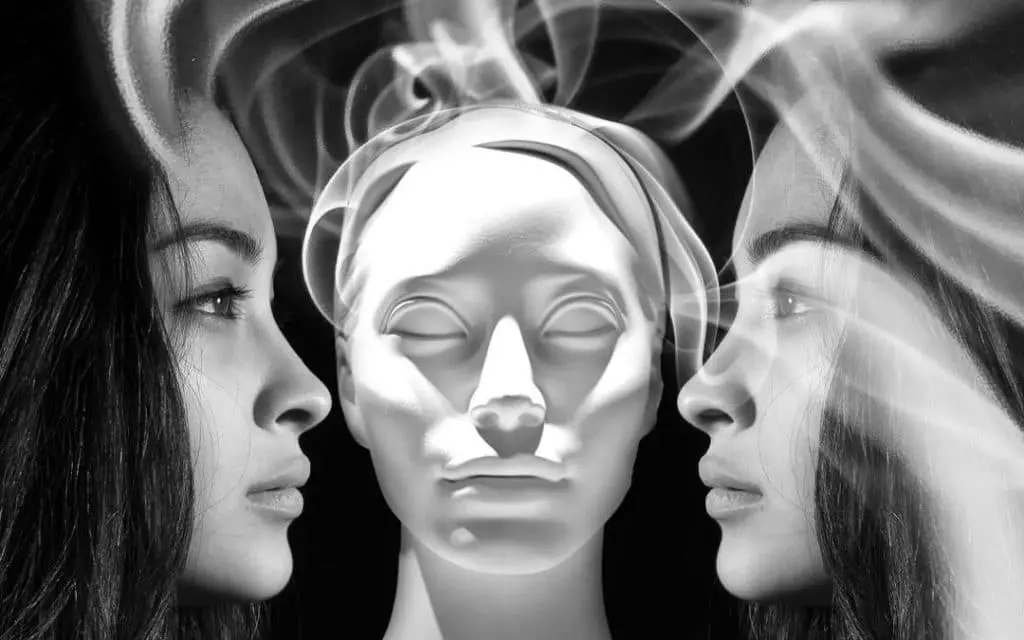There schizophreniawhich affects up to 1% of the population, is a neuropsychiatric disorder characterized by multiple symptoms. One of the most common, and for which there is no treatment, is apathy and lack of motivation.
Apathy in Schizophrenia
By comparing neural activation between a group of patients and a control group during a reward-based game, a team from the University of Geneva (UNIGE) and the University Hospitals of Geneva (HUG), in collaboration with researchers from the Charité in Berlin, has deciphered the neural basis of this disorder.
The brains of people with schizophrenia are unable to distinguish between different levels of reward in a subtle enough way, which hinders their motivation to carry out daily activities.
Published in the magazine Brainthese findings suggest several potential treatments, including brain stimulation and targeted psychotherapy.
When we talk about schizophrenia, we think first of hallucinatory or delusional symptoms, such as ideas of persecution. Less visible, however, are apathy and lack of motivation, which are equally burdensome in everyday life.
“Lack of motivation is at the root of the difficulties that people with schizophrenia encounter in pursuing their studies, holding down a job or maintaining social relationships,” explains Stefan Kaiser, full professor at the Department of Psychiatry and the Synapsy Centre for Research in Neuroscience and Mental Health at the Faculty of Medicine of the UNIGE and director of the Department of Psychiatry at the HUG, who led this research.

“Furthermore, antipsychotics prescribed for hallucinatory phenomena and delusions have no effect on motivation, for which there is currently no effective treatment.”
What happens in the brain, specifically in the neural reward system, the seat of motivation and behavioral response? Using magnetic resonance imaging, scientists sought to determine whether individuals with schizophrenia exhibit distinct neural responses from those without mental disorders, and whether these responses correlate with clinical observations.
The scientists recruited 152 volunteers, 86 people with schizophrenia and 66 “controls” of similar age and gender, to play a reward game in an MRI scanner to observe the activation of their brain regions. The experiment was conducted in three phases: an assessment of motivation in different contexts, an initial game session, and, three months later, a second identical session to the first to measure the stability of the brain response over time.
“To stimulate reward networks, the game allows you to win money, up to about CHF 40. At the beginning of each session, a circle appears indicating the possible reward: an empty circle (gain 0), a circle with a bar (gain between CHF 0 and 0.4) or a circle with 2 bars (gain between CHF 0 and 2)”, explains Mariia Kaliuzhna, researcher at the Department of Psychiatry of the Faculty of Medicine of the UNIGE and first author of this research.
“Then three more circles appear. The one on the right or the one on the left differs from the other two; players have to press the corresponding button as quickly as possible. Finally, a red bar shows how high the reward was, at which point the neural network activates. The tests went on like this for about fifteen minutes.”

During the first session, individuals with schizophrenia showed lower levels of activation than the “controls,” especially when the reward was low, as if their brains were struggling to activate. On the other hand, during the second session, many of them saw their brain activity increase significantly, even more than the control group who maintained the same level of activation.
“Despite appearances, these results are not contradictory. In fact, they indicate that in people with schizophrenia, the neuronal response is not able to adapt to the context of reward. There is hypoactivation or saturation, which indicates a failure in the regulation of this brain structure.
“In both cases, the person fails to properly evaluate the reward to adjust their behavior. The result is an inability to respond to small daily rewards, such as a meal with friends or a pleasant walk, typical of apathetic behavior,” explains Kaliuzhna.
These findings open up a series of therapeutic avenues that would precisely target this defect in neuronal activation. “For example, psychotherapy that targets the perception of reward and pleasure to strengthen the motivation to engage in social behaviors, or the use of noninvasive brain stimulation, a technique already used to treat depression,” explains Kaliuzhna.
“These techniques, however, are complex and must be validated in clinical trials before any clinical implementation.”
Patients with schizophrenia and individuals with social anhedonia exhibit impaired processing of social reward
Schizophrenia patients and individuals with social anhedonia have been shown to exhibit impaired processing of social reward, which ultimately leads to impaired social interaction and social dysfunction.
Most previous studies of social reward anticipation in schizophrenia spectrum disorders have been limited to behavioral design. It remains unclear whether the putative neural processing for social reward anticipation is altered in both individuals with schizophrenia and individuals with social anhedonia.
Recently, a research team led by Dr. Raymond Chan from the Institute of Psychology (IP) of the Chinese Academy of Sciences (CAS) conducted a study to specifically examine the neural mechanisms underlying social reward anticipation in these populations.
The researchers recruited 23 individuals with schizophrenia and 17 healthy controls, as well as 37 individuals with social anhedonia and 50 healthy controls, to complete the social incentive delay imaging task while undergoing brain MRI.

They found that individuals with schizophrenia showed hypoactivation of the left medial frontal gyrus and negative functional connectivity (FC) with left parietal regions. However, individuals with social anhedonia showed hyperactivation of the left middle frontal gyrus when anticipating a social reward. Additionally, individuals with schizophrenia showed enhanced cerebellar-temporal FC, while individuals with social anhedonia showed enhanced FC in left frontal regions.
These findings suggest that both individuals with schizophrenia and those with social anhedonia exhibit altered neural processing for the anticipation of social reward and that such neural activity shows a weakened association with real-life social network characteristics.
The study expands our understanding of the neural basis of social motivation in schizophrenia spectrum disorders.
Schizophrenia patients at different stages show different deficits in discriminating rewarding values
Anhedonia and amotivation are key features of negative symptoms observed in patients with schizophrenia. In particular, amotivation refers to the decreased willingness to initiate or maintain goal-directed behavior that may be supported by various impairments in reward evaluation.
Adaptive range evaluation or coding is considered one of the factors that contribute to demotivation in patients with schizophrenia. It is defined as the ability to discriminate reward values that relates to adaptive range evaluation. However, it is still not fully known whether adaptive range evaluation is altered or impaired in different stages of schizophrenia.
To address this issue, Dr. Raymond Chan’s team at the Institute of Psychology, Chinese Academy of Sciences (CAS) conducted a study to examine reward evaluation and adaptive coding of range in individuals along the schizophrenia continuum.
They recruited 30 pairs of patients with chronic schizophrenia and their controls, 30 pairs of patients with first-episode schizophrenia and their controls, and 34 pairs of individuals with high and low levels of social anhedonia to complete a task specifically designed to capture adaptive interval coding.
Participants were asked to decide whether to choose a high- or low-effort grip condition based on the probability and magnitude of the reward.

Their results showed that chronic schizophrenia patients showed over-adaptation to the value range, and their performance was positively correlated with self-reported consumerist interpersonal pleasure. On the other hand, first-episode schizophrenia patients showed reduced value adaptation, which was inversely correlated with the severity of avolition and positively correlated with the overall proportion of choosing to exert more effort.
Furthermore, individuals high in social anhedonia showed a comparable adaptive range with individuals low in social anhedonia. However, these individuals high in social anhedonia showed a negative correlation between value adaptation performance and the percentage of choosing to exert more effort in the lower value condition of the behavioral task.
Taken together, these findings suggest a dysfunction in range adaptation in individuals across the spectrum of schizophrenia, ranging from patients with established clinical diagnoses to individuals with subclinical features of psychopathology. Such range adaptation may indicate a potential underlying mechanism of amotivation in schizophrenia spectrum disorders.
Using task-based neuroimaging paradigms and magnetic resonance spectroscopy, Dr. Chan’s team is now conducting studies to dissect the neural mechanism underlying adaptive interval assessment in schizophrenia spectrum disorders and other mental disorders that share similar clinical manifestations.
“We hope these studies will open a new window into understanding amotivation and anhedonia in schizophrenia spectrum disorders and other mental disorders,” said Dr. Chan.
The study, published online in Schizophrenia Bulletin , is titled “Adaptive value representation by interval across different stages of schizophrenia: A proof-of-concept study.”
#Schizophrenia #Apathy #Hand #Hand
